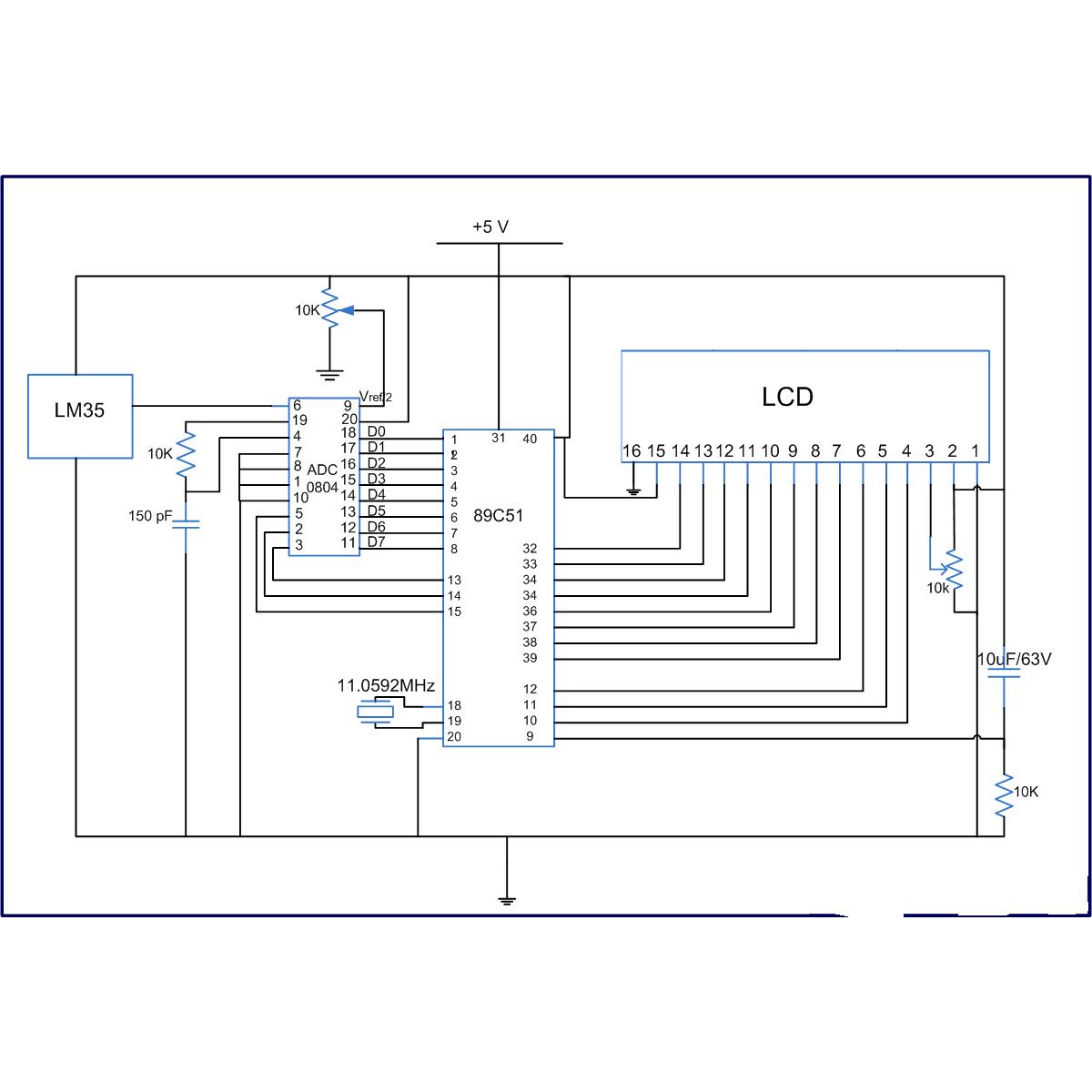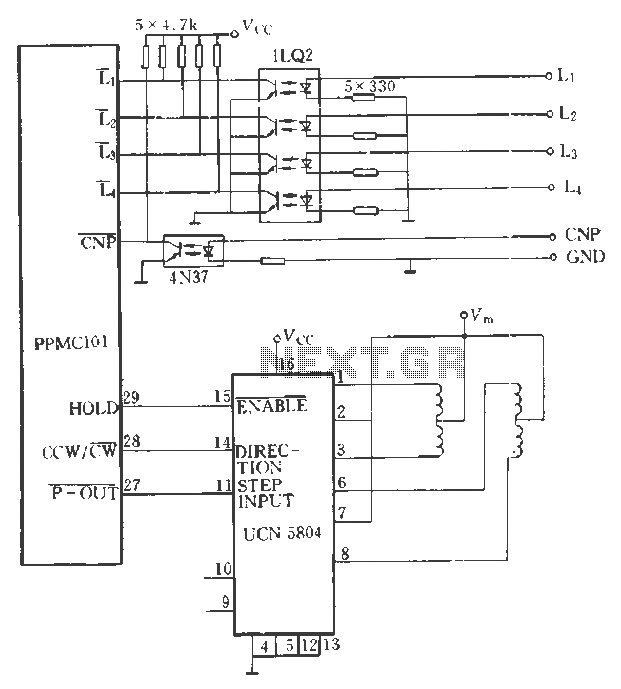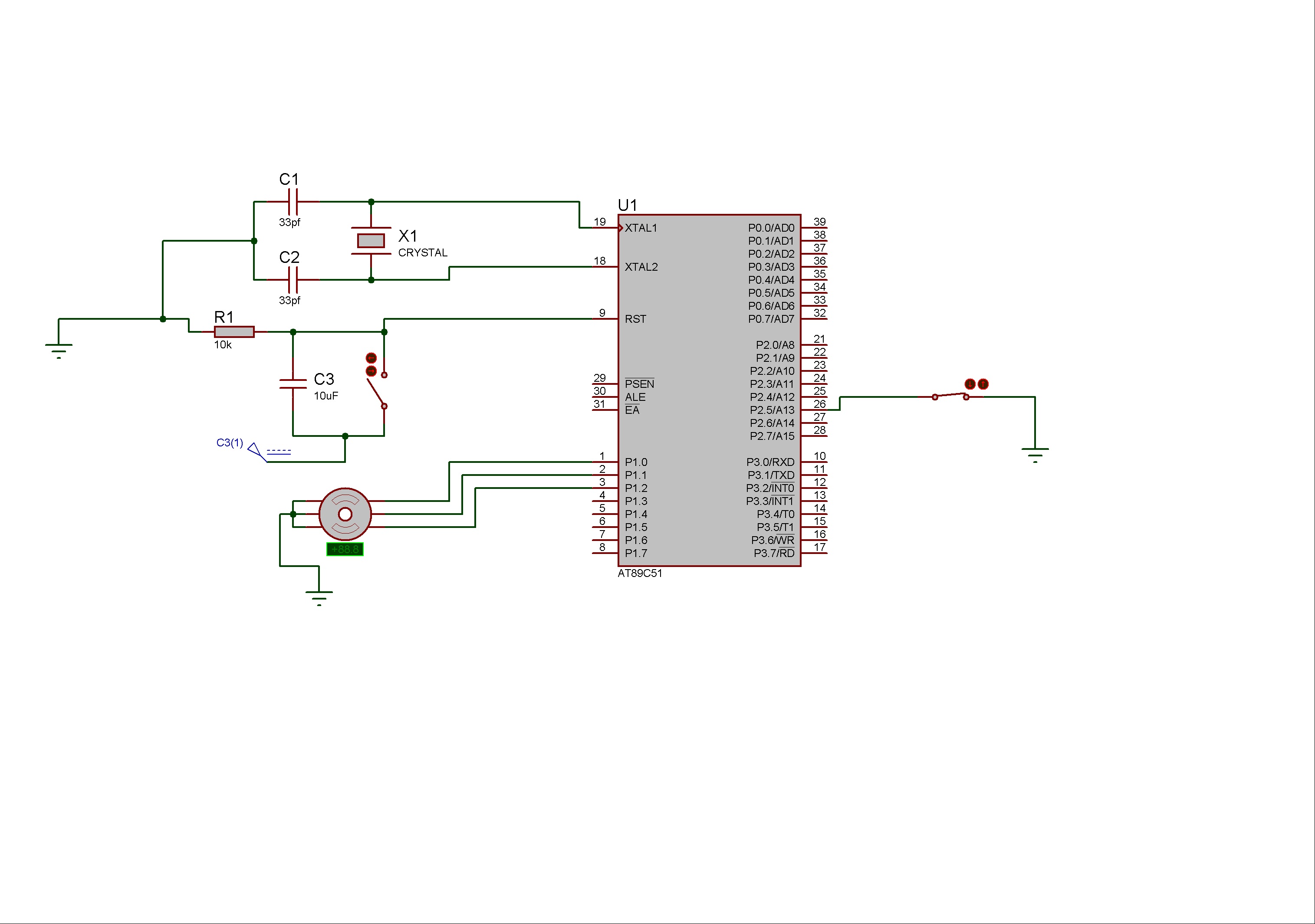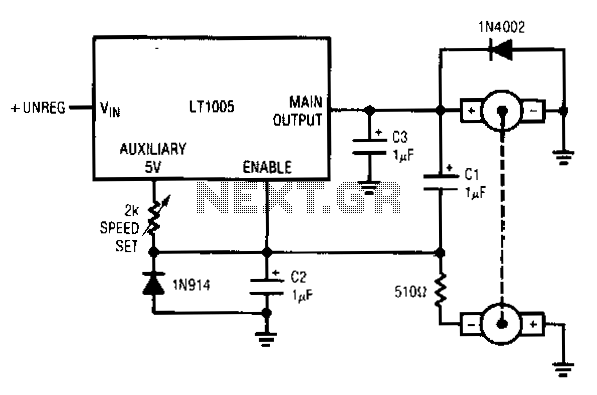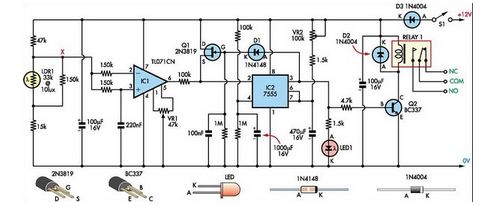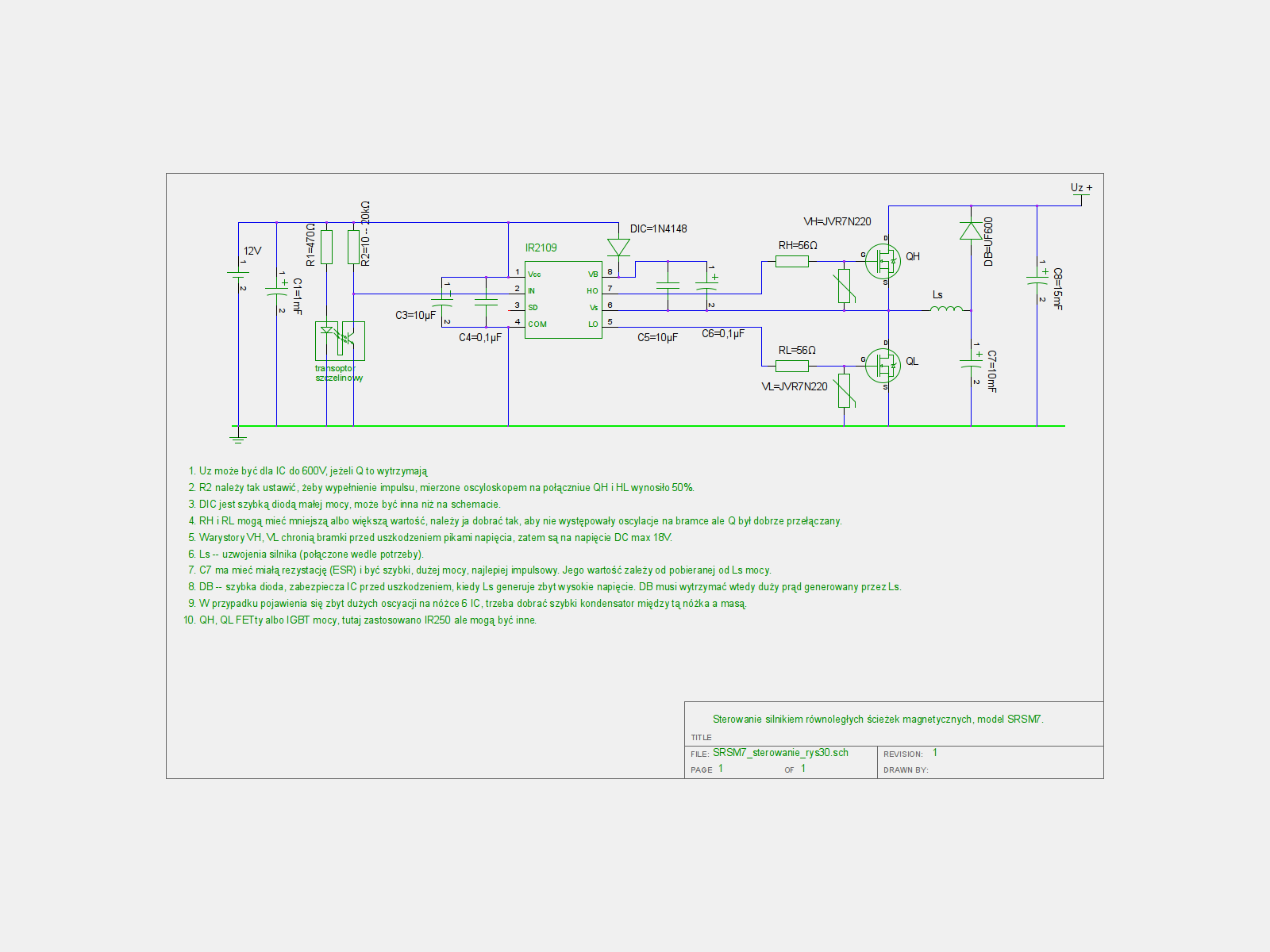
Compact 3-in-1 Stripboard DIYduino with Integrated Sensor and L298N Motor Shield
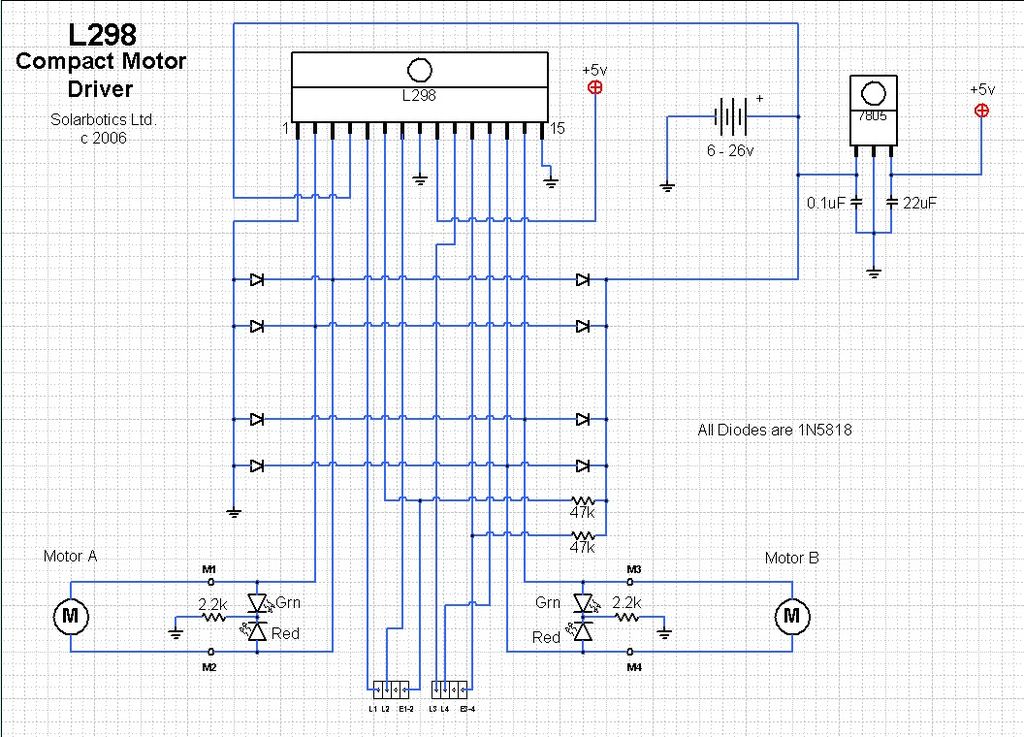
The ArduinoISP Bootloader/Programmer Combination Shield (not displayed) works with an Arduino equipped with a USB to serial chip (e.g., Arduino Uno) to upload the bootloader and sketches to a DIYduino. A USB to Serial programmer can also be utilized to upload a sketch, bypassing the Bootloader Shield, allowing the DIYduino created here to load the bootloader. To design the strip board layout, the schematic was determined first. A strip board design can be created from any schematic, whether it is original, downloaded, or reverse-engineered. The official Arduino schematic was deemed overly complex for this purpose, thus a simpler minimalist Arduino schematic was modified. Capacitor values were adjusted to smooth potential voltage peaks at the 5V regulator based on available stock. The LED/resistor connected to Pin 13 was omitted to conserve components, with a temporary connection made for testing functionality. The minimalist Arduino schematic was combined with an L298N motor driver schematic sourced from Solarbotics. L298N pins 5, 7, 10, and 12 (L1, L2, L3, and L4) were connected to the ATMEGA digital pins 7, 8, 13, and 12 respectively. Pins E1-2 and E3-4 (L298N pins 6 and 11) are connected to +5V for maximum motor speed or to Arduino PWM pins 9 and 6 for adjustable motor speed. The ATMEGA 168/328 pin map is also provided for proper pin assignment. A parts table, including prices from January 2013, is included. Some parts, such as jumper wires or resistors, are considered standard inventory and not listed as individual items. Individual parts are noted, with an asterisk indicating potential leftovers, like extra strip board for future projects. Prices marked with a single asterisk are not included in the total device price. Additionally, item prices at Newark decrease with bulk orders, typically over 10 units. The highest individual prices are listed, excluding special offers. Not all parts are essential for operation; those that can be omitted are marked with a double asterisk. The bare bones price is indicated at the bottom of the parts table. The ATMEGA 328 requires a bootloader, which can be uploaded using the recently developed ArduinoISP Bootloader/Programmer Combination Shield. Pre-bootloaded ATMEGAs are also available but at nearly double the price, with one listed in the table.
The ArduinoISP Bootloader/Programmer Combination Shield serves as an effective tool for programming and bootloading ATMEGA microcontrollers in DIY projects. This shield is particularly useful for individuals looking to create their own Arduino-compatible boards, known as DIYduino. The integration of a USB to serial chip, such as that found in the Arduino Uno, facilitates the uploading of sketches and bootloaders efficiently.
The design process begins with the creation of a schematic, which is essential for developing a corresponding strip board layout. The adaptability of strip board designs allows for the use of various schematics, simplifying the prototyping process. The minimalist Arduino schematic was selected for its simplicity, providing a more manageable platform for the intended application. Adjustments to component values, particularly capacitors, were made to ensure stability in voltage regulation, crucial for maintaining the performance of the circuit.
The integration of an L298N motor driver into the design expands the functionality of the DIYduino, enabling it to control motors effectively. The connections between the L298N and the ATMEGA pins were carefully planned to ensure compatibility and optimal performance. The use of PWM pins allows for variable motor speed control, enhancing the versatility of the project.
A comprehensive parts list is critical for assembly, with considerations made for bulk purchasing to reduce costs. The distinction between essential and optional components is clearly marked, aiding in budget management and resource allocation. This meticulous approach to component selection and circuit design ensures that the final product is both functional and cost-effective.
Overall, the ArduinoISP Bootloader/Programmer Combination Shield, combined with the minimalist Arduino schematic and the L298N motor driver, represents a robust platform for developing custom Arduino-compatible devices. The careful planning and execution of this project exemplify the principles of efficient electronics design, providing a valuable resource for hobbyists and engineers alike.ArduinoISP Bootloader/Programmer Combination Shield (not shown) & Arduino with USB to serial chip (e. g. Arduino Uno ) to upload the bootloader and sketches to DIYduino. You can also use a USBtoSerial programmer for uploading a sketch and work around the Bootloader Shield and use the DIYduino you build here to load the bootloader.
To create the strip board layout I determined the schematic I wanted to create first. You can essentially do a strip board design with any schematic no matter if you invented it, downloaded it, or re-engineered it. For me the official Arduino schematic was a tad too complicated and essentially overkill for my purpose.
Instead I altered the much simpler schematic of the minimalist Arduino as shown in the first figure. This schematic was published and discussed on. 2. I changed the values of the capacitors that smooth potential voltage peaks at the 5V regulator. These are the values that I had available in my stock and they`ll do the job. 3. I crossed out the LED/resistor connected to Pin13 to safe parts. I only connected an LED/resistor temporarily to test the functionality of the DIYduino as described later. Then I combined the minimalist Arduino schematic with a schematic of a L298N motordriver that I found on solarbotics`s site.
I did this by connecting L1, L2, L3, and L4 (L298N pins 5, 7, 10, & 12) to the ATMEGA`s digital pins 7, 8, 13, & 12, respectively. Pins E1-2 and E3-4 (L298N pins 6 & 11) are connected to +5V for maximum motor speed at all times or to Arduino PWM pins 9 & 6 for adjustable motor speed, respectively.
I am also showing the ATMEGA 168/328 pin map, which help me to assign the proper ATMEGA pins and which can be found at. The table shows all the parts for the devices including prices from Jan, 2013. I considered some of the parts, such as jumper wires or resistors, as standard inventory that is likely purchased in bulk and not as individual parts.
Therefore I typically listed individual parts and noted with an asterisk when you would have leftovers, such as for example extra strip board which you can use on other projects. I did not consider the prices marked with the single asterisk for the total price of the device. Further note that item prices at Newark drop when you order a certain number of parts, typically if you order more than 10x.
I listed the highest individual prices here and also ignored any special offers or promotions. If you buy more the price will go down. On another note, not all of the parts listed here are really necessary for operation. The parts that you can omit are marked with a double asterisk. The bare bones price` is also indicated at the bottom of the table. Last not least, the ATMEGA 328 that I used required a bootloader. I recently created an instructable called ArduinoISP Bootloader/Programmer Combination Shield that addressed how to upload a bootloader to a virgin ATMEGA. You can also buy ATMEGAs that have a bootloader installed. They are almost double the price. For completion I listed one in the table. 🔗 External reference
The ArduinoISP Bootloader/Programmer Combination Shield serves as an effective tool for programming and bootloading ATMEGA microcontrollers in DIY projects. This shield is particularly useful for individuals looking to create their own Arduino-compatible boards, known as DIYduino. The integration of a USB to serial chip, such as that found in the Arduino Uno, facilitates the uploading of sketches and bootloaders efficiently.
The design process begins with the creation of a schematic, which is essential for developing a corresponding strip board layout. The adaptability of strip board designs allows for the use of various schematics, simplifying the prototyping process. The minimalist Arduino schematic was selected for its simplicity, providing a more manageable platform for the intended application. Adjustments to component values, particularly capacitors, were made to ensure stability in voltage regulation, crucial for maintaining the performance of the circuit.
The integration of an L298N motor driver into the design expands the functionality of the DIYduino, enabling it to control motors effectively. The connections between the L298N and the ATMEGA pins were carefully planned to ensure compatibility and optimal performance. The use of PWM pins allows for variable motor speed control, enhancing the versatility of the project.
A comprehensive parts list is critical for assembly, with considerations made for bulk purchasing to reduce costs. The distinction between essential and optional components is clearly marked, aiding in budget management and resource allocation. This meticulous approach to component selection and circuit design ensures that the final product is both functional and cost-effective.
Overall, the ArduinoISP Bootloader/Programmer Combination Shield, combined with the minimalist Arduino schematic and the L298N motor driver, represents a robust platform for developing custom Arduino-compatible devices. The careful planning and execution of this project exemplify the principles of efficient electronics design, providing a valuable resource for hobbyists and engineers alike.ArduinoISP Bootloader/Programmer Combination Shield (not shown) & Arduino with USB to serial chip (e. g. Arduino Uno ) to upload the bootloader and sketches to DIYduino. You can also use a USBtoSerial programmer for uploading a sketch and work around the Bootloader Shield and use the DIYduino you build here to load the bootloader.
To create the strip board layout I determined the schematic I wanted to create first. You can essentially do a strip board design with any schematic no matter if you invented it, downloaded it, or re-engineered it. For me the official Arduino schematic was a tad too complicated and essentially overkill for my purpose.
Instead I altered the much simpler schematic of the minimalist Arduino as shown in the first figure. This schematic was published and discussed on. 2. I changed the values of the capacitors that smooth potential voltage peaks at the 5V regulator. These are the values that I had available in my stock and they`ll do the job. 3. I crossed out the LED/resistor connected to Pin13 to safe parts. I only connected an LED/resistor temporarily to test the functionality of the DIYduino as described later. Then I combined the minimalist Arduino schematic with a schematic of a L298N motordriver that I found on solarbotics`s site.
I did this by connecting L1, L2, L3, and L4 (L298N pins 5, 7, 10, & 12) to the ATMEGA`s digital pins 7, 8, 13, & 12, respectively. Pins E1-2 and E3-4 (L298N pins 6 & 11) are connected to +5V for maximum motor speed at all times or to Arduino PWM pins 9 & 6 for adjustable motor speed, respectively.
I am also showing the ATMEGA 168/328 pin map, which help me to assign the proper ATMEGA pins and which can be found at. The table shows all the parts for the devices including prices from Jan, 2013. I considered some of the parts, such as jumper wires or resistors, as standard inventory that is likely purchased in bulk and not as individual parts.
Therefore I typically listed individual parts and noted with an asterisk when you would have leftovers, such as for example extra strip board which you can use on other projects. I did not consider the prices marked with the single asterisk for the total price of the device. Further note that item prices at Newark drop when you order a certain number of parts, typically if you order more than 10x.
I listed the highest individual prices here and also ignored any special offers or promotions. If you buy more the price will go down. On another note, not all of the parts listed here are really necessary for operation. The parts that you can omit are marked with a double asterisk. The bare bones price` is also indicated at the bottom of the table. Last not least, the ATMEGA 328 that I used required a bootloader. I recently created an instructable called ArduinoISP Bootloader/Programmer Combination Shield that addressed how to upload a bootloader to a virgin ATMEGA. You can also buy ATMEGAs that have a bootloader installed. They are almost double the price. For completion I listed one in the table. 🔗 External reference
